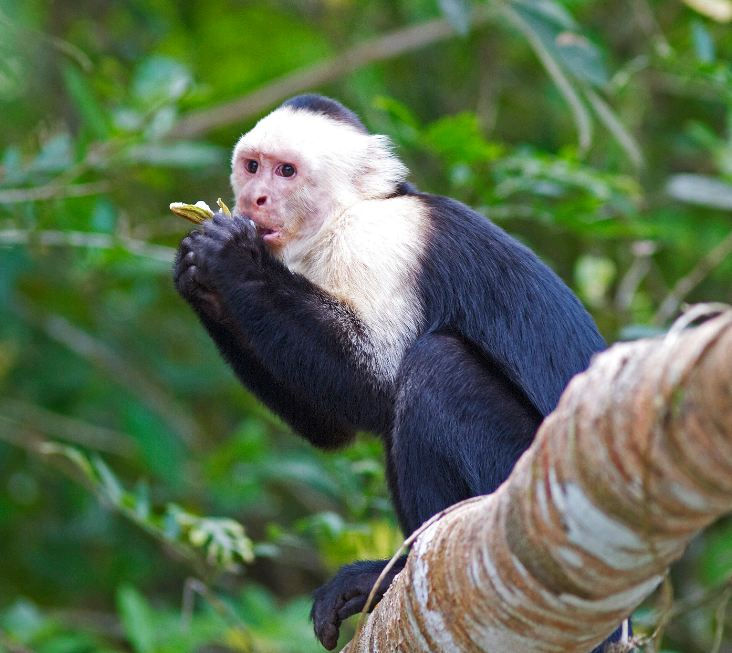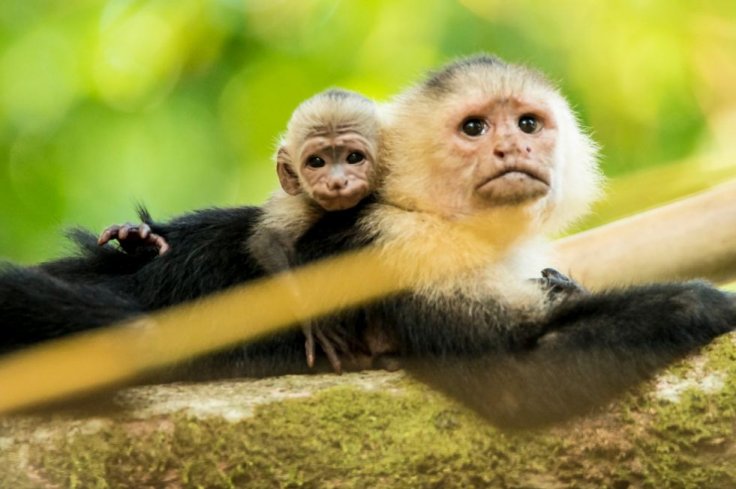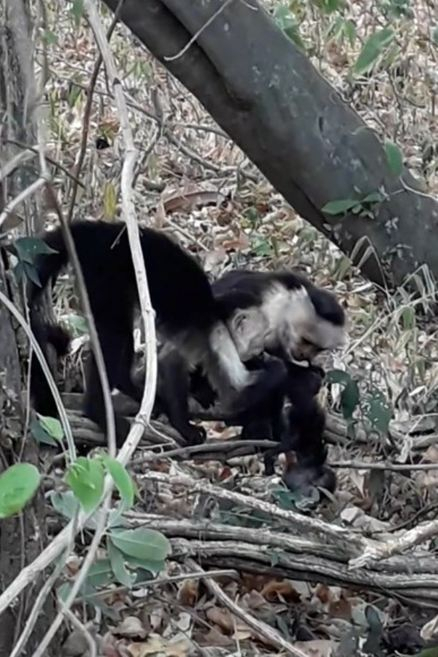For most primate lovers, the mention of a capuchin monkey would most likely evoke the image of a white-faced, energetic and mischievous creature much like the one in the Night in the Museum franchise. No imagery associated with the monkey may skirt the realm of violence or abnormal behavior. However, scientists recently reported an extremely rare and bizarre behavioral display among the species—Cannibalism.
In a report published in the journal Ecology and Evolution, researchers detailed a rare instance of cannibalism within a community of Panamanian white-faced capuchins (Cebus imitator) being studied in the Santa Rosa Sector of the Área de Conservación Guanacaste, Costa Rica. The incident involved the consumption of the corpse of a 10-day-old female infant by two members of the group—a juvenile male and the alpha female. Interestingly, this is the only reported case of cannibalism among the study population in over 30 years.
"This is the only case of cannibalism reported in the Sector Santa Rosa study population in over 37 years of observation on 5 + study groups. Additionally, there are no published reports of this behavior from the nearby site of Lomas Barbudal, where capuchins have been studied since 1990," the authors wrote.
Unusual Circumstances

Capuchins are omnivores (i.e) they consume both plants and other smaller animals. Along with the nourishment that they obtain from plant sources, they are known to occasionally feed on smaller vertebrates such as lizards, squirrels and birds. Most importantly, they eat only prey that they have killed, and on occasions, may share it with other members of their group.
Cannibalism, which is the consumption of an organism by members of its own species, is not unheard of in the animal world. Ironically, even human beings have been known to part take in the flesh of their own kind. However, cannibalism among New World primates (found only in Central and South America and Mexico) is exceptionally rare, and only eight cases have been observed across six different species so far. It is this weird confluence of unlikely factors that makes this incident particularly odd.
What happened?
The harrowing event occurred on April 9, 2019. CT, the 7-year-old mother of the unfortunate 10-day-old infant, CT-19, belonged to a group of capuchins labeled LV. According to the authors, CT-19 was CT's first child. A skirmish between the LV group and the neighboring RM group forced CT to seek refuge in a tree away from the conflict. She remained on the tree for a while where she rested and groomed the infant.

While the exact cause was not observed, the authors reported that CT began screaming suddenly. Following which, the baby capuchin fell to the ground. The authors suspect that it could have been the result of a confrontation between CT and another 2-year-old male, PW. The mother descended from the tree and picked CT-19 and went back up. However, she fell again. When CT repeated the action, the infant fell again and lay motionless. She began bleeding near the abdomen and was presumed dead later.
Though the mother protected the corpse of her child from others, she made no attempts of picking it up. "In the case we report here, although the mother presented herself to the infant, she made no attempt to carry it when it was unable to cling to her," the authors wrote.
Feeding On A Dead Infant
A little later, a juvenile male, BS, was seen with the dead infant on the ground. He soon bit off the toes from her left foot and began eating it. SS, the 23-year-old alpha female of the group, and the juvenile's grandmother, approached the corpse and licked it. Unwilling to share, BS carried the corpse up a nearby tree and continued to eat it. Despite remaining vigilant, CT made no efforts to retrieve her child's remains. However, the male dropped the corpse a short while later.

This time, other members of the group inspected the dead infant. Yet, they did not display any interest in consuming the remains. Soon, SS pulled the corpse away from her grandson and began eating the left foot while her grandson feasted on the tail that he managed to pull off. The matriarch consumed CT-19's body for over 30 minutes and ate the entire lower half. When she finally discarded the body, all which remained of the dead infant was her arms, chest, and head.
Following this, other members of the group, including the mother, investigated what was left of CT-19. After a brief duration, they left the area to forage and moved away. When the monkeys did not return for over 15 minutes, the scientists collected the corpse for examination and photographs.
Why Was the Dead Infant's Body Cannibalized?
Several postulations were made by the authors to explain this peculiar occurrence. Firstly, the mother's inexperience with handling infants could have played a crucial role in the entire episode. As the authors assume that an aggressive exchange may have occurred between CT and PW, it is likely that the 10-day-old was a victim of infanticide by PW.

Also, only two members consumed the infant's flesh despite the body being investigated by others. "Because unfamiliar objects, foods, and situations elicit a neophobic or neophilic reaction, or a mixture of both. We suggest that this observed case was an unusual situation for the capuchins," the authors explained.
Another important observation was that the infant's face was not bitten—a common behavior exhibited by capuchins against their prey. "The alpha female discarded the uneaten head, upper limbs, and torso of the corpse, and no other group members attempted to consume it. Thus, the dead infant was not treated like other prey species," the authors added.
And finally, the authors posited that it was nothing but sheer hunger that could have driven both the monkeys to engage in the act. BS' mother had recently given birth. Hence, the juvenile was weaning of breastfeeding and may have needed nourishment. SS was seen giving birth only 13 days later, suggesting that the calorific need fueled by her pregnancy encouraged her to cannibalize. Nevertheless, the authors maintain that this a rare occurrence and that such behavior requires further study.








